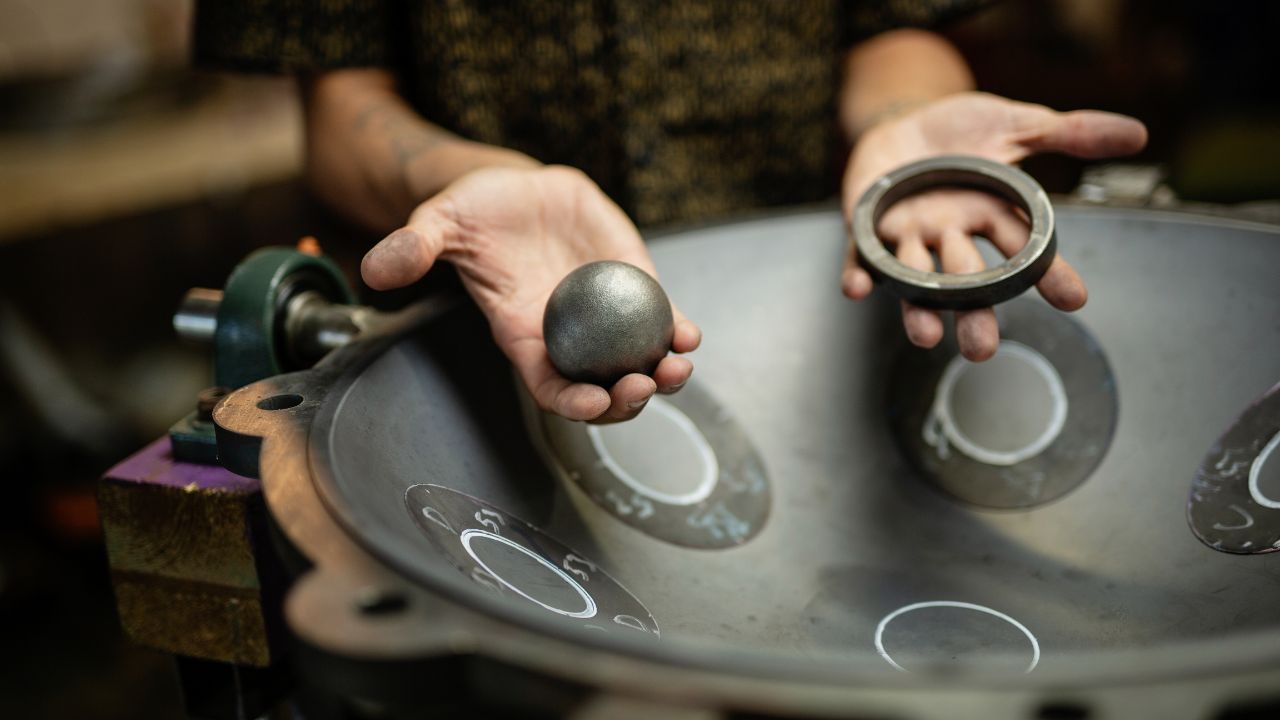The handpan is a rather interesting instrument, aroused interest due to its external design and the sound it produces. Originally appearing at the beginning of the 2000s and gaining particular popularity in contemporary culture as one of the unique instruments, the handpan is beloved for its enchanting sound and meditative mood.
In this article, you get to understand the structure of handpans as well as the sound they produce that makes them stand out. To find quality handpans, visit https://www.cosmoshandpan.com/.
Origins and Structure
The handpan was derived from the Hang, an instrument created in Switzerland by percussion instrument makers Felix Rohner and Sabina Schärer. It gets cues from a variety of global instruments, such as the steel drum, gong, and ghatam. Constructed from two half-shells of deep drawn, nitrided steel sheet glued together, the handpan is typically shaped like a flying saucer. The top ("Ding") side features a center note surrounded by a circle of at least seven to nine-tone fields, each meticulously hammered by hand.
The bottom ("Gu") side, also known as the resonant side, usually contains a port that emits sound akin to a ghatam or udu. This intricate design not only contributes to the instrument’s durability but also enhances its acoustic properties, allowing each note to resonate with clarity and depth.
Tuning and Scales
The handbags are played by dimpling and hammering the steel, thereby forming regions of compression and tension on the face of the steel, which produces harmonic and clear notes when the steel is struck.
Through fine-tuning, tuners make the contribution that enables the handpan to play harmonic and melodic tunes by adjusting the frequencies of the notes. The choice of scale can vary widely—some common scales include D Minor, F Major, and Akebono, each offering a different emotional texture and musical atmosphere. This flexibility allows musicians to select a scale that resonates deeply with their creative vision and emotional expression.
The Sound: Ethereal and Captivating
The most unique feature of the handpan is its audio, which is typically termed to possess a unique closeness to interstellar rhythm and a mesmerizing sound. It gives out low and deep tones that are resonant and sustained, followed by a silence that is as long as the sustain. When played, the handpan can create a sound envelope that seems to fill the space completely, immersing the listener in a cocoon of harmonic vibrations that can be profoundly moving.
The handpan’s sound is also highly adaptive to the player's touch—varying the striking technique can elicit a wide range of dynamics and tonal nuances, from gentle whispers to vibrant echoes. This responsiveness makes the handpan an expressive instrument suitable for both solo performances and ensemble settings.
Playing Techniques
The playing technique for the handpan is as unique as the instrument itself. Musicians typically use their hands and fingers to tap the tone fields, producing notes with a clean, clear quality. Advanced players might integrate the use of the side of their thumb or other parts of the hand to strike the edge or the interstitial space between the tone fields, creating additional percussive sounds.
The handpan encourages improvisation and spontaneity, allowing players to explore the instrument intuitively. This makes every performance a personal journey, not just for the musician but also for the audience. The intimate and immersive nature of playing the handpan often results in deeply emotional and transcendent experiences.
Cultural Impact and Therapeutic Use
The soothing quality of the handpan's sound has found a place in therapeutic settings, aiding in meditation and relaxation. Its calming sound profile makes it an excellent tool for music therapists and wellness practitioners who use sound as a medium for healing. Here are some key points highlighting its impact:
- Therapeutic Benefits: The handpan tones are used to facilitate deep relaxation and stress relief, which is beneficial in therapy and self-care.
- Sound Healing: Its resonant, soothing tunes are ideal for sound baths, helping individuals achieve mental and emotional clarity.
- Meditative Aid: This mystical sound relaxes the mind in such a way that it can complement sessions that focus on awareness.
Furthermore, the handpan community is strong and active internationally, and the people can participate in festivals, workshops, and retreats, where those new and experienced come together to celebrate this unique musical instrument and develop the existing techniques and new possibilities for the handpan, not only as a musical instrument.
Conclusion
The handpan is more than a musical instrument; it is a way to engage in a completely different form of experience of music. Its structure and sound encourage both players and listeners to immerse themselves in a sphere of pondering and feeling. In theater plays, music therapy, recreation, or solo entertainment, the handpan remains to amaze anyone who has the privilege to give it an ear to its harmonic, melodious, and magical sound. As time passes, this instrument will gain more popularity and continue to serve as evidence of peoples’ inventiveness and the relevance of melodies in people’s lives.

